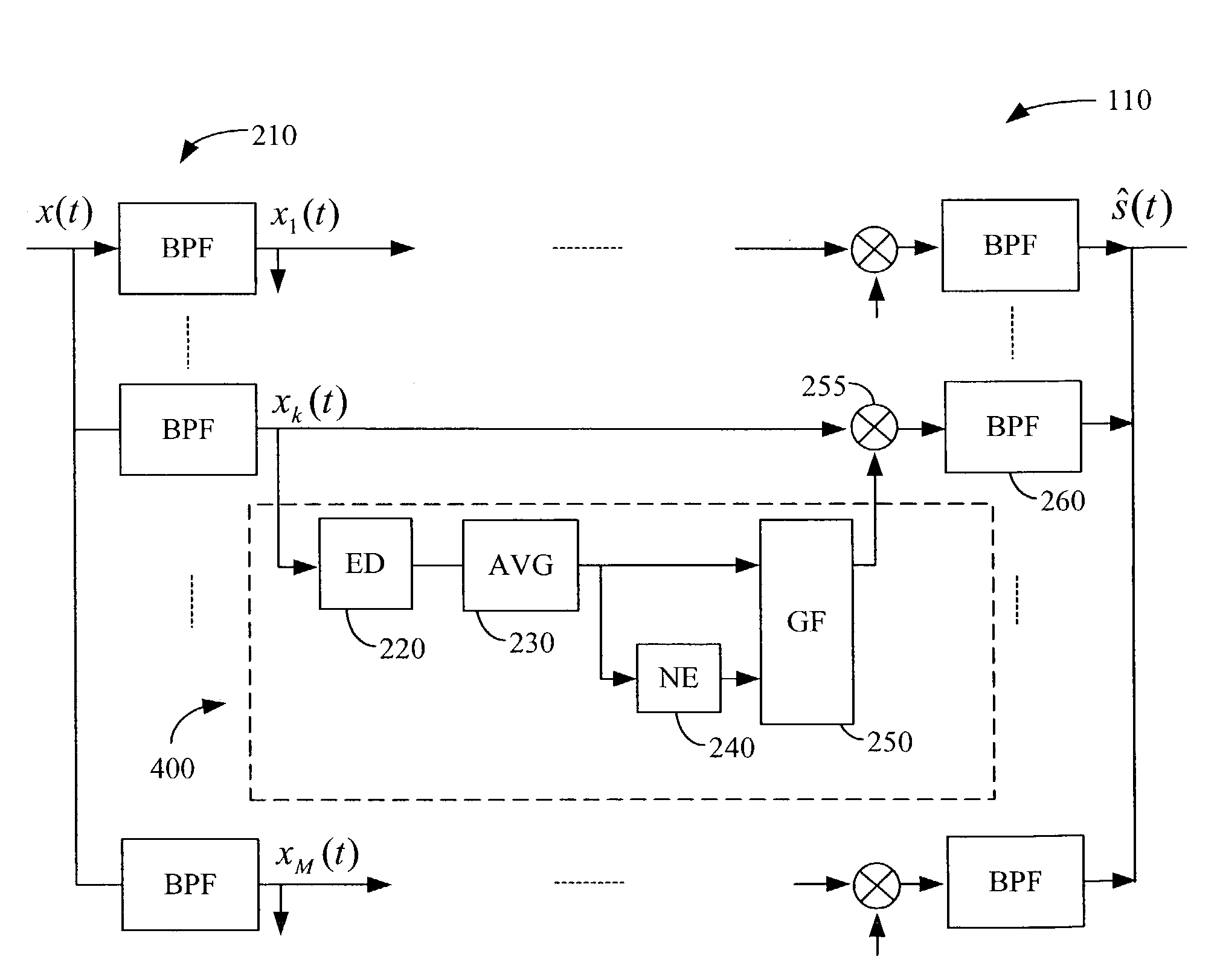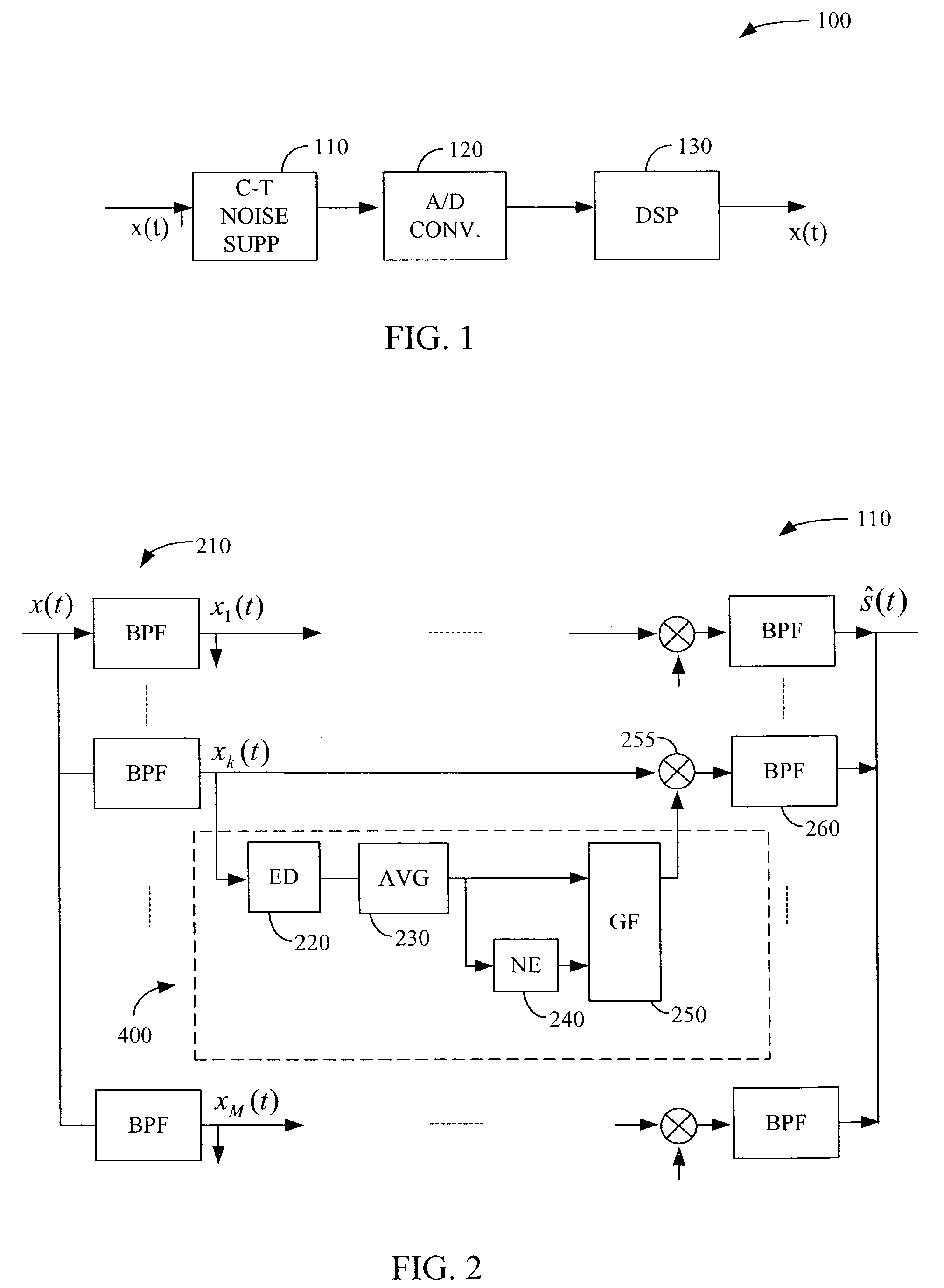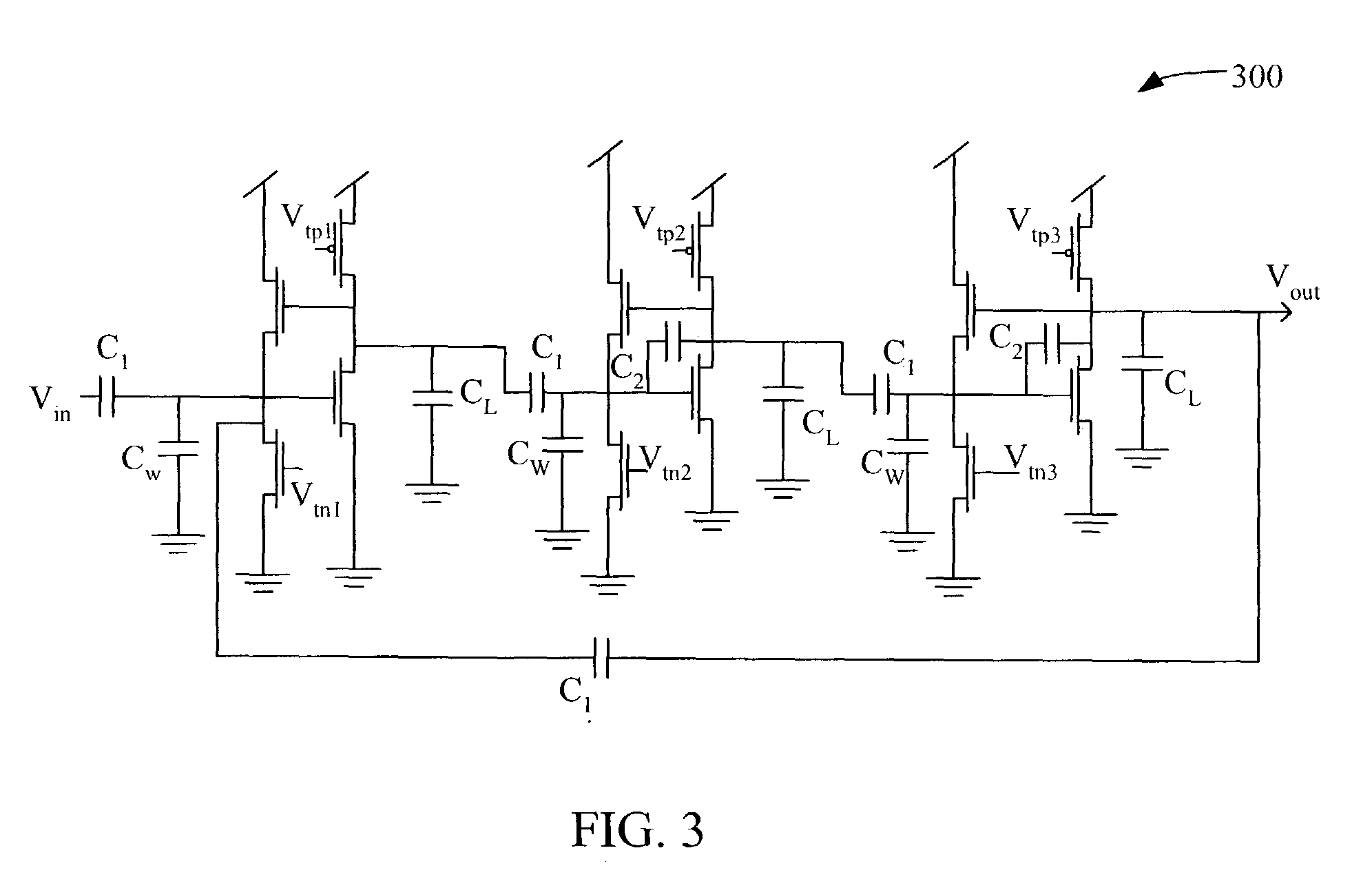Analog audio signal enhancement system using a noise suppression algorithm
a technology of noise suppression and analog audio, applied in the field of signal processing, can solve the problems of low power consumption of a/d converters, low noise suppression, and low system design time, and achieve the effect of suppressing noise, low power consumption, and suppressing nois
- Summary
- Abstract
- Description
- Claims
- Application Information
AI Technical Summary
Benefits of technology
Problems solved by technology
Method used
Image
Examples
Embodiment Construction
[0028]While most noise suppression techniques focus on the processing of discrete-time audio signals, FIG. 1 presents a cooperative signal processing system 100 in which the processing is performed on an analog audio signal prior to the analog / digital (A / D) conversion. By performing this significant portion of the processing in low-power analog circuits, the overall functionality of the system 100 is enhanced by utilizing analog / digital computation in a mutually beneficial way.
[0029]As shown in FIG. 1, the cooperative signal processing system 100 includes a continuous-time noise suppression system 110. The continuous-time noise suppression system 110 suppresses the noise evident in an analog signal x(t), such as an output of a microphone, before the analog signal x(t) undergoes analog to digital (A / D) conversion by an A / D converter 120. By performing analog signal processing on the signal x(t) before it is converted to digital, the computation load on a digital signal processor (DSP...
PUM
 Login to View More
Login to View More Abstract
Description
Claims
Application Information
 Login to View More
Login to View More - R&D
- Intellectual Property
- Life Sciences
- Materials
- Tech Scout
- Unparalleled Data Quality
- Higher Quality Content
- 60% Fewer Hallucinations
Browse by: Latest US Patents, China's latest patents, Technical Efficacy Thesaurus, Application Domain, Technology Topic, Popular Technical Reports.
© 2025 PatSnap. All rights reserved.Legal|Privacy policy|Modern Slavery Act Transparency Statement|Sitemap|About US| Contact US: help@patsnap.com



